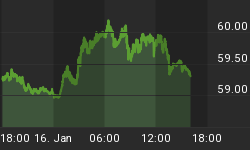Over the past couple of weeks, investors have turned decidedly bearish and as I pointed out in recent articles (click here and here), this is a bullish signal. This was the place to buy, but I have questioned the sustainability of any rally beyond a couple of weeks because the longer term data suggests a market in the topping process. This analysis could change down the road, but for now that is how I see it.
In any case, this article isn't about my data or market "call", but the analysis of others. Other market commentators have also picked up on the extremes in bearish sentiment and have suggested that a turn in the market is near as well. What irks me a bit about this analysis is that it only considers the recent past. It doesn't consider the entirety of the data, and I think that is a disservice to their readers. Markets do go down despite bearish extremes in investor sentiment.
In particular, the 1970's were a terrible time to be a contrarian. Looking at the Investors Intelligence data, which was one of the data points cited this week as the number of bearish newsletter writers currently exceeds the bullish ones, we have data going back to 1969. So let's ask a simple question: when the number of bears exceeds the number of bulls how did the S&P500 perform? In this study, we will look at the period from 1970 to 1987.
Figure 1 is a weekly chart of the S&P500. The snapshot is from 1979 to 1987. The percentage of Investor Intelligence bulls is the green line in the bottom panel; the percentage of bears is the red line. We will have a position in the S&P500 only when the red line (bears) is greater than the green line (bulls). The buy and sell signals from this strategy are on the price chart.
Figure1. S&P500/ weekly 1979 to 1987
This strategy produced 39 signals from 1973 to 1987. 59% were winning trades. This strategy yielded 1 S&P500 point; while buy and hold netted 125 S&P500 points. Your market exposure was around 12% and the largest individual trade drawdown was 34% (1974). The equity curve for this strategy is shown in figure 2.
Figure 2. Equity Curve
This is not very impressive. In other words, from 1973 to 1982, contrarian analysis and betting against the consensus led to very poor results. Why 1982? It appears that the bad signals bottomed out with the start of the 1982 bull market. (See figure 2 again.)
So here is the same study done from October, 1987 to the present. There were 33 signals, and 80% were winners. Such a strategy yielded 447 S&P500 points while buy and hold netted 850 S&P500 points. The largest trade drawdown was 40% (2008), and your market exposure was around 10% of the time. In other words, you made a little bit more than 50% of buy and hold with only 1/10th the market exposure. The equity curve for this strategy is shown in figure 3, and the picture speaks for itself.
Figure 3. Equity Curve
So here is my point: betting against the bears isn't always the "holy grail" that some commentators have made it out to be. It appears that contrarian analysis functions better in a bull market than in a bear market. Then again, a bull market does cover a lot of mistakes.
Extremes in indicators - whether due to prices or investors emotions in response to prices - occur all the time. Not all extremes mean revert as you may remember in 2008. And it is in the extremes that new trends are made --think of the market that has gotten overbought and stays that way for months.
The market should bounce here and it has, and this has clearly established S&P500 1040 as the line in the sand. The extremes of last week have not given way to a new down trend. This will occur on a weekly close below S&P500 1040. For now, it is party onward and upward.
















